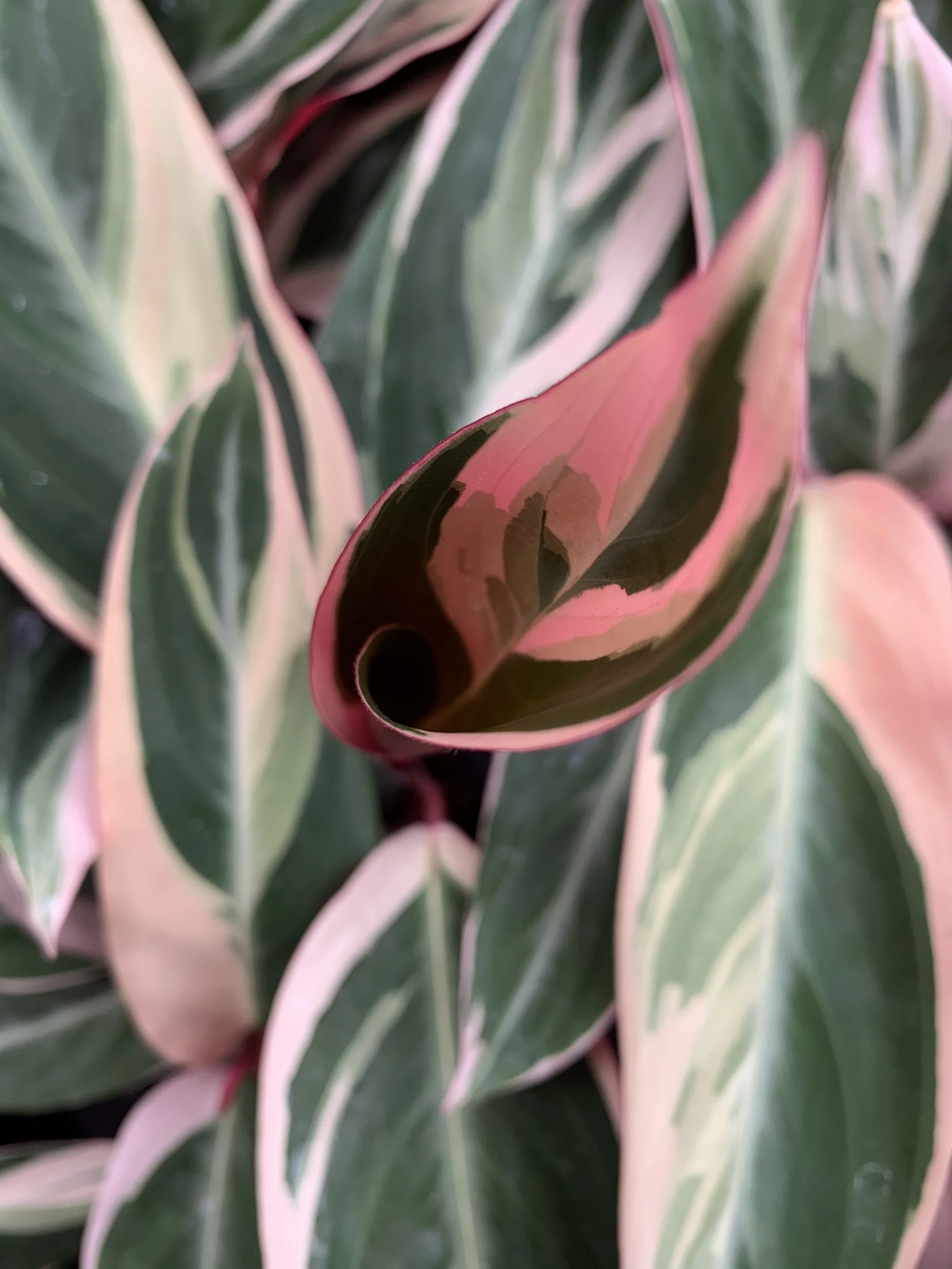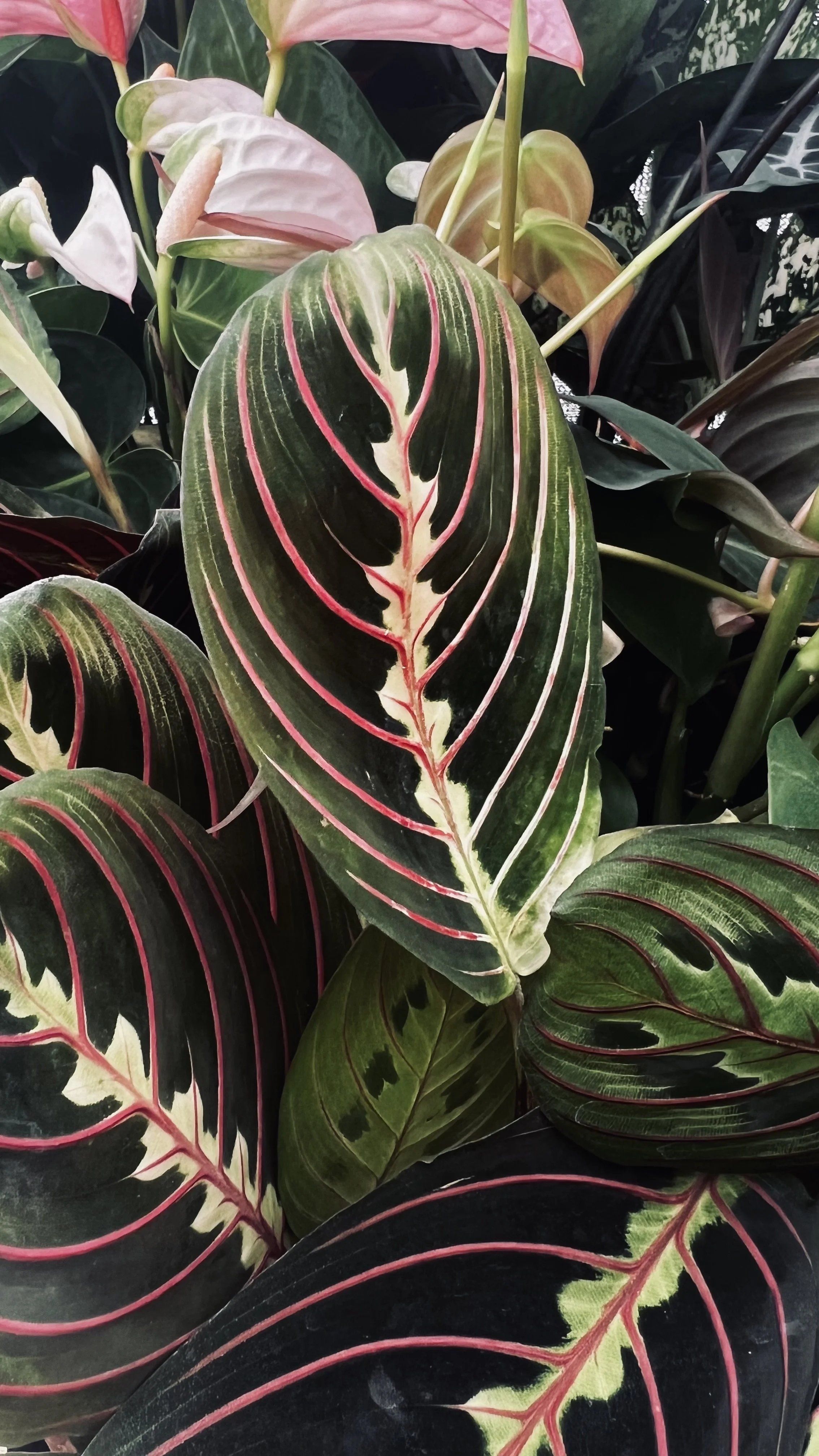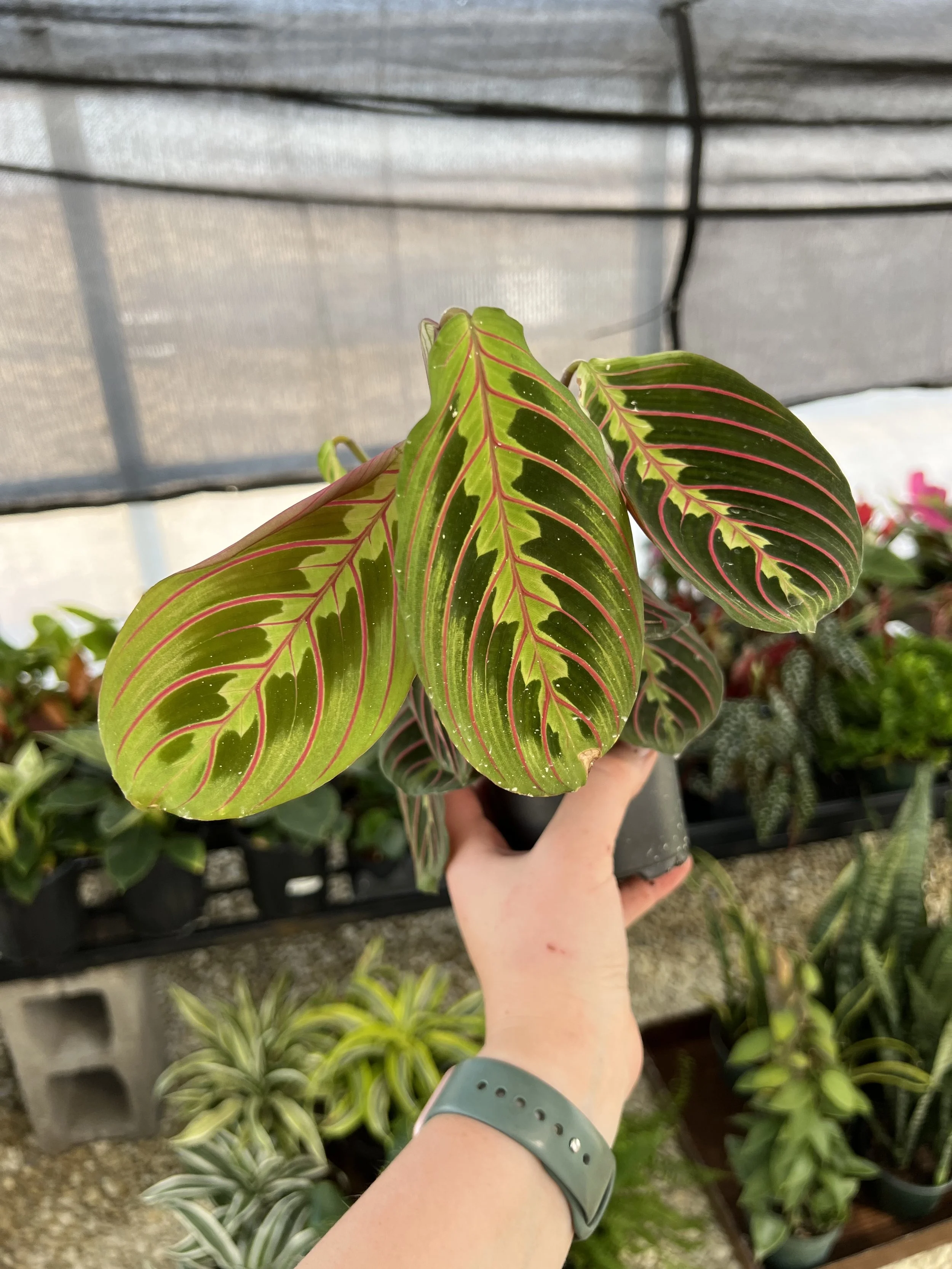ARROWROOTS
Family Marantaceae

PRAYER PLANT
Calathea | Maranta | Stromanthe
Family Marantaceae
-
Light: Bright, indirect light is ideal to encourage growth. Avoid west or south facing windows with too much direct light that can cause leaf scorch.
Temperature: 60-85 F
Humidity: high; avoid drafty areas
Humidity is a key player in this group of plants. If you notice crispy leaf edges, odds are that your air is too dry.
-
Water: Water when the top 1-2” of potting mix feels dry to the touch. Overwatering is the most common problem with Aglaonema. Symptoms include yellowing leaves that wilt even though the potting mix is moist.
Repotting: Repot every 2-3 years into a slightly larger container (1-2” increased diameter or depth). Use a general purpose potting mix.
Fertilizing: Either…
Water Application: Incorporate fertilizer into your watering cycle once per month March through September. Dilute an all purpose fertilizer (20-20-20) by half OR use your favorite fertilizer rated for houseplant use in your water.
Slow Release: Incorporate slow release fertilizer pellets into the top inch of potting soil every 6 months. Apply the rate indicated for indoor plants on the label. If no recommendation for houseplants is present, apply 1/4 to 1/2 the listed rate.
-
The Marantaceae family includes many favorites including prayer plant (Maranta).
-
(Listed in order of commonality…)
Leaf margin burn caused by low humidity
Two-spotted spider mites
Low light levels causing leaf curl
-
Is prayer plant pet safe?
Yes
My prayer plant leaves are closed in on themselves. What’s wrong?
Prayer plants fold their leaves upward in low light levels. Their are many theories as to why, but the most plausible is that it is a moisture retention response combined with temperature regulation. Either way, the arrowroots are clearly using it as a survival tactic.
Have a more specific question?
I’m just a few clicks away.




